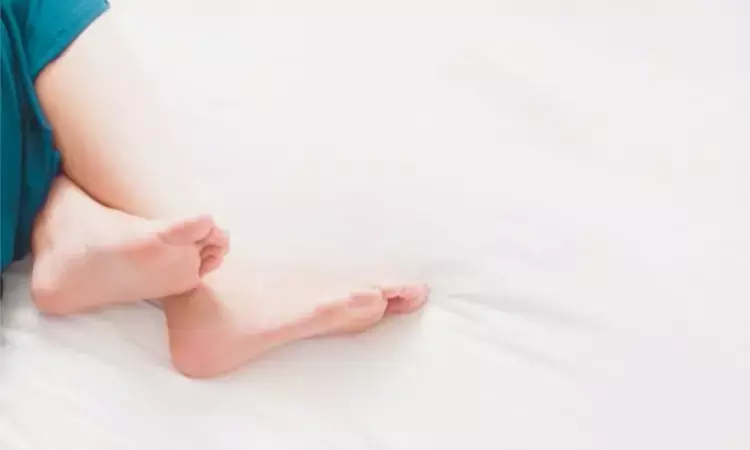- Home
- Medical news & Guidelines
- Anesthesiology
- Cardiology and CTVS
- Critical Care
- Dentistry
- Dermatology
- Diabetes and Endocrinology
- ENT
- Gastroenterology
- Medicine
- Nephrology
- Neurology
- Obstretics-Gynaecology
- Oncology
- Ophthalmology
- Orthopaedics
- Pediatrics-Neonatology
- Psychiatry
- Pulmonology
- Radiology
- Surgery
- Urology
- Laboratory Medicine
- Diet
- Nursing
- Paramedical
- Physiotherapy
- Health news
- Fact Check
- Bone Health Fact Check
- Brain Health Fact Check
- Cancer Related Fact Check
- Child Care Fact Check
- Dental and oral health fact check
- Diabetes and metabolic health fact check
- Diet and Nutrition Fact Check
- Eye and ENT Care Fact Check
- Fitness fact check
- Gut health fact check
- Heart health fact check
- Kidney health fact check
- Medical education fact check
- Men's health fact check
- Respiratory fact check
- Skin and hair care fact check
- Vaccine and Immunization fact check
- Women's health fact check
- AYUSH
- State News
- Andaman and Nicobar Islands
- Andhra Pradesh
- Arunachal Pradesh
- Assam
- Bihar
- Chandigarh
- Chattisgarh
- Dadra and Nagar Haveli
- Daman and Diu
- Delhi
- Goa
- Gujarat
- Haryana
- Himachal Pradesh
- Jammu & Kashmir
- Jharkhand
- Karnataka
- Kerala
- Ladakh
- Lakshadweep
- Madhya Pradesh
- Maharashtra
- Manipur
- Meghalaya
- Mizoram
- Nagaland
- Odisha
- Puducherry
- Punjab
- Rajasthan
- Sikkim
- Tamil Nadu
- Telangana
- Tripura
- Uttar Pradesh
- Uttrakhand
- West Bengal
- Medical Education
- Industry
Adenotonsillectomy Resolves Most Limb Movements in Children With Sleep Apnea: Study Shows

USA: Periodic limb movements during sleep (PLMS) are common in children with obstructive sleep apnea (OSA), and their prevalence appears to rise with age and OSA severity. New evidence suggests that adenotonsillectomy (AT), a standard surgical treatment for OSA, resolves these abnormal movements in the majority of affected children.
The study was led by Seckin O. Ulualp and colleagues from the Department of Otolaryngology–Head and Neck Surgery at the University of Texas Southwestern Medical Center, Dallas, USA. The researchers reviewed clinical records to determine how frequently PLMS occur in children with OSA and how these movements change after AT.
Between January 2022 and July 2023, the team analyzed data from 1,159 children (median age: 5 years; 58.3% boys) who underwent AT at a tertiary care children's hospital. The severity of OSA was classified based on the obstructive apnea-hypopnea index (OAHI), with mild cases defined as 1–4 events per hour, moderate as 5–9, and severe as 10 or more. An elevated periodic limb movement index (PLMI) was defined as more than five limb movements per hour during sleep, measured through polysomnography.
The study revealed the following findings:
- 9.8% of children had elevated PLMI before surgery.
- Prevalence did not significantly differ by sex, race, or weight, but age played a major role.
- Compared with toddlers, preschoolers were 22 times more likely, grade-schoolers 35 times more likely, and teenagers 31 times more likely to have elevated PLMI.
- Children with moderate OSA had 2.3 times higher odds of elevated PLMI than those with mild OSA, while those with severe OSA had nearly twice the odds.
- Among 54 children with elevated PLMI who underwent follow-up sleep studies after surgery, 85% showed complete resolution, while 15% continued to have elevated scores.
- Overall, PLMI decreased significantly after adenotonsillectomy, dropping from an average of 11.9 events per hour to 2.9 events per hour.
- Children with residual OSA after surgery were more likely to continue having elevated PLMI compared with those whose OSA was fully resolved.
“The potential clinical implications of our findings are the consideration of adenotonsillectomy for the initial management of children with OSA and elevated PLMI and counseling caregivers regarding the treatment of elevated PLMI,” the authors wrote.
The study, published in The Laryngoscope, highlights the dual benefit of AT—not only addressing the airway obstruction characteristic of OSA but also significantly reducing associated limb movements that may disrupt sleep quality.
However, the researchers acknowledged certain limitations. Being a retrospective study, detailed information on sleep characteristics, symptom changes, and ferritin levels could not be systematically assessed. Additionally, only a small subset of children underwent both pre- and post-surgery sleep studies, limiting the scope of subgroup comparisons.
"Despite these challenges, the findings provide strong support for the use of adenotonsillectomy in managing OSA-related complications in children, with evidence showing that most will experience substantial improvement in both breathing-related and movement-related sleep disturbances," the authors concluded.
Reference:
Niksic, A., Ulualp, S. O., Chapel, A. C., Liu, C., Lenes-Voit, F., & Mitchell, R. B. Periodic Limb Movements Before and After Adenotonsillectomy in Children With Obstructive Sleep Apnea. The Laryngoscope. https://doi.org/10.1002/lary.32314
Dr Kamal Kant Kohli-MBBS, DTCD- a chest specialist with more than 30 years of practice and a flair for writing clinical articles, Dr Kamal Kant Kohli joined Medical Dialogues as a Chief Editor of Medical News. Besides writing articles, as an editor, he proofreads and verifies all the medical content published on Medical Dialogues including those coming from journals, studies,medical conferences,guidelines etc. Email: drkohli@medicaldialogues.in. Contact no. 011-43720751


